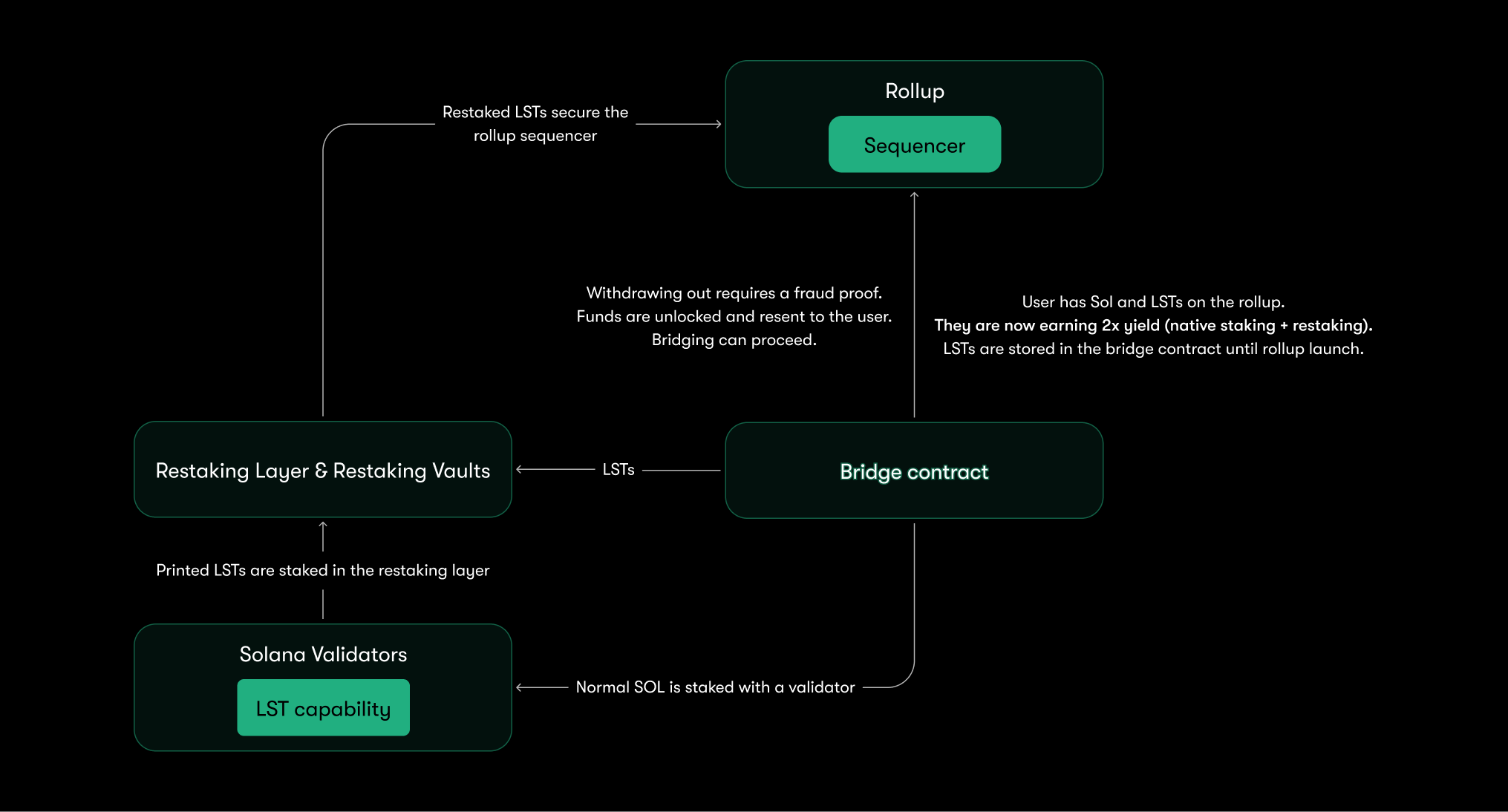Summary
Composable’s Picasso Network has already introduced restaking to the Solana ecosystem. Now, the MANTIS intent settlement framework makes it easier than ever to participate in staking and restaking on Solana by serving as a one-stop source for all of your SOL staking needs.
In short, with MANTIS, you can:
-
Stake SOL
-
Receive native yield from SOL staking
-
Receive a liquid staking token (LST) for your stake
-
Opt in to restaking the LST on the backend
-
Receive additional restaking yield
This is all done directly within the UI on mantis.app, saving you time and effort.
How it Works
Native Staking
Users can stake your SOL tokens directly into mantis.app. These SOL are then delegated on the backend to Solana validators.
This will allow users to accrue native yield, just as they normally would from using their SOL for proof-of-stake validation on Solana. Users will also receive a liquid staking token (LST) to represent their SOL stake.
Restaking
Users with LSTs from SOL staking on MANTIS can opt into staking these tokens in Picasso’s Restaking Layer. Tokens that have been restaked in this layer will be used to secure the sequencers of the MANTIS Solana-based rollup. The rollup is decentralized with a rotating set of independent sequencers that ensures censorship-resistance. This is critical for guaranteeing intents and solutions are accepted before the end of the scoring period, maintaining the credibility of scoring and facilitating blockspace auctions. This is done similarly to AltLayer’s restaked rollup design, which incorporates decentralized sequencing into a rollup’s architecture. This ensures that transaction inclusion on layer 1 is not done in a malicious way, allowing our solvers to crowdsource their collateral.
Users will earn additional rewards from opting into restaking, enhancing their overall yield from the same amount of underlying assets.
Overview Diagram
The flow of native staking and restaking in MANTIS is depicted in the figure below. As shown, these processes are combined in the MANTIS framework (though each can still be individually performed), streamlining the (re)staking process for users:
